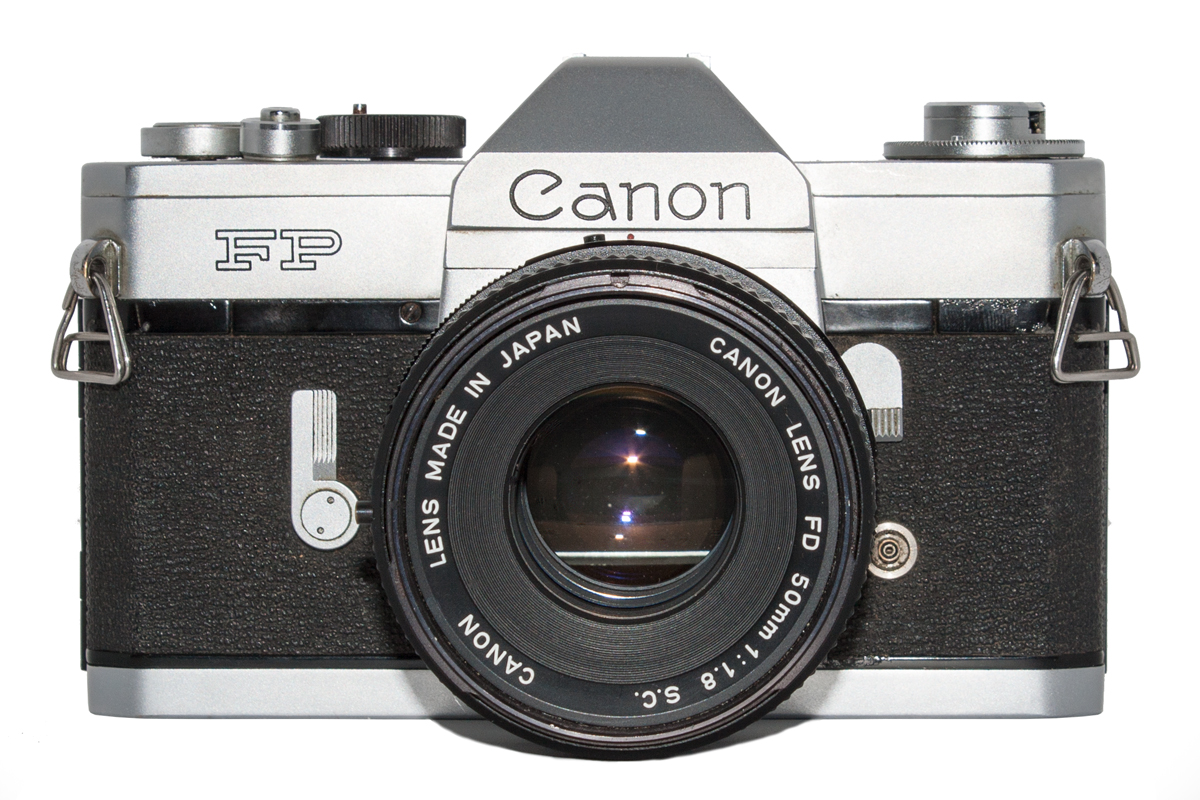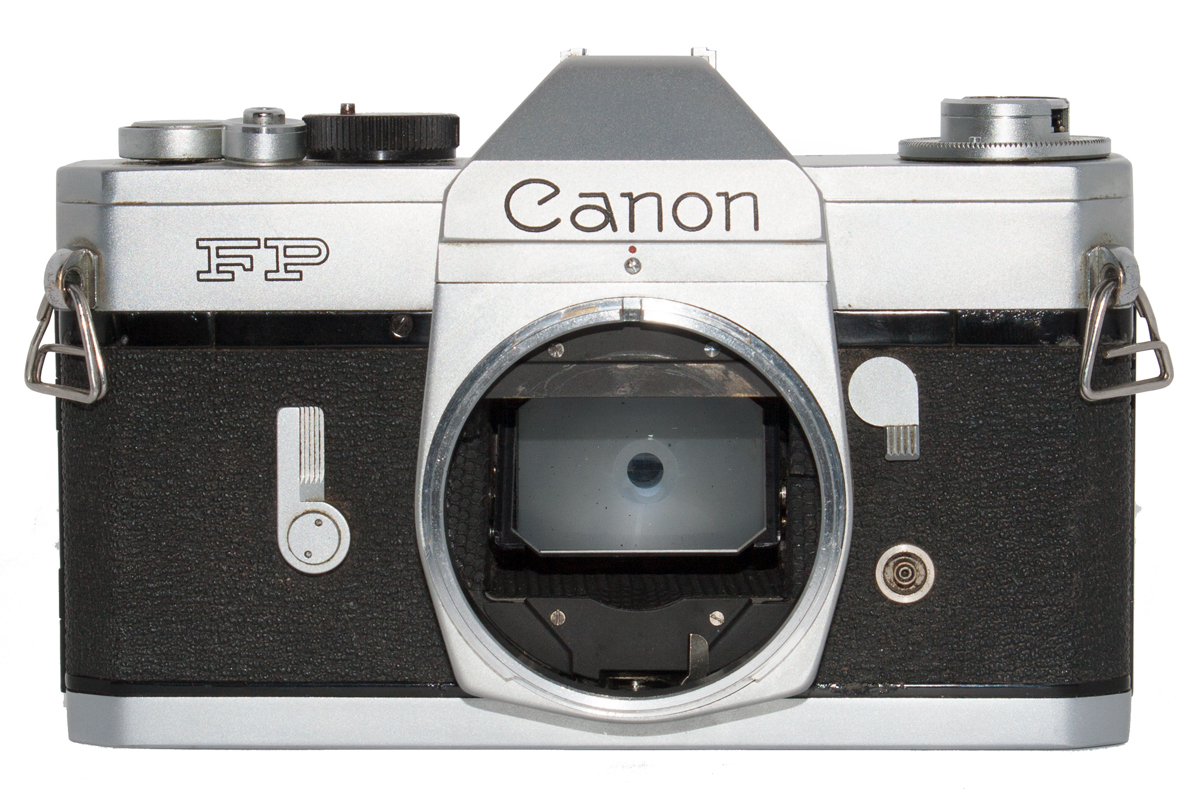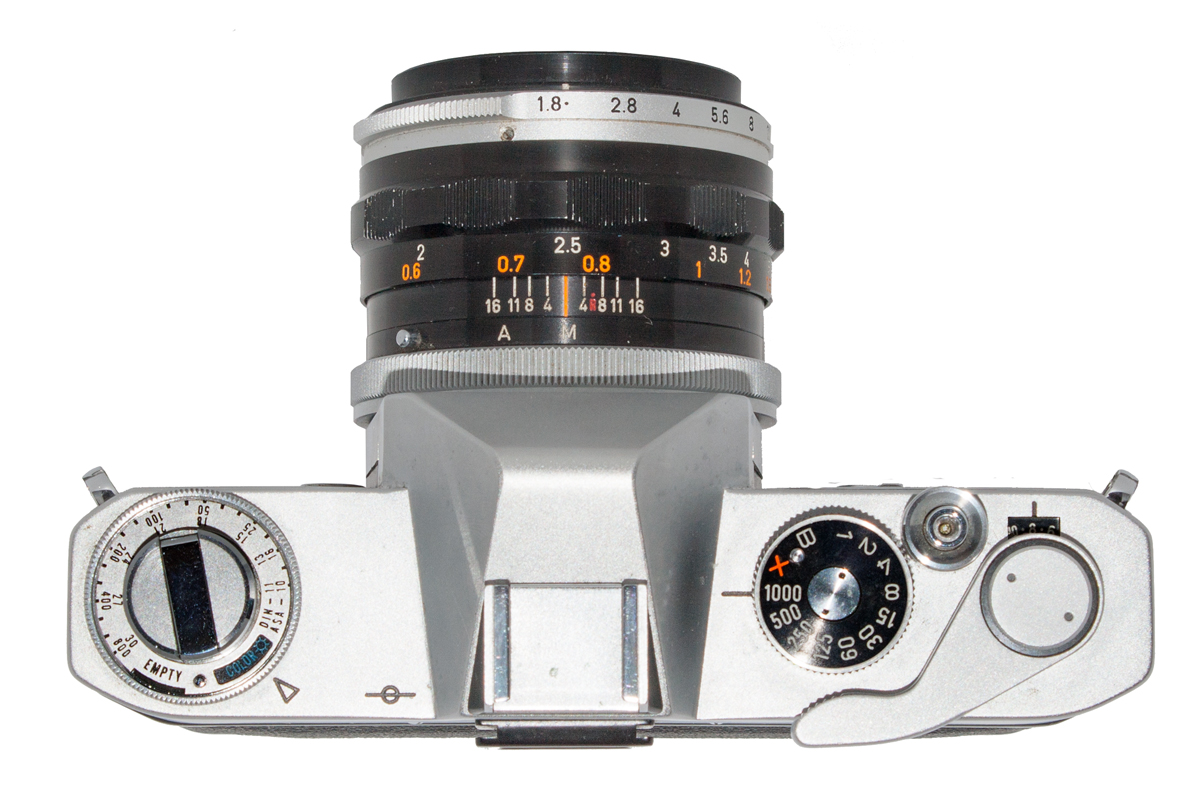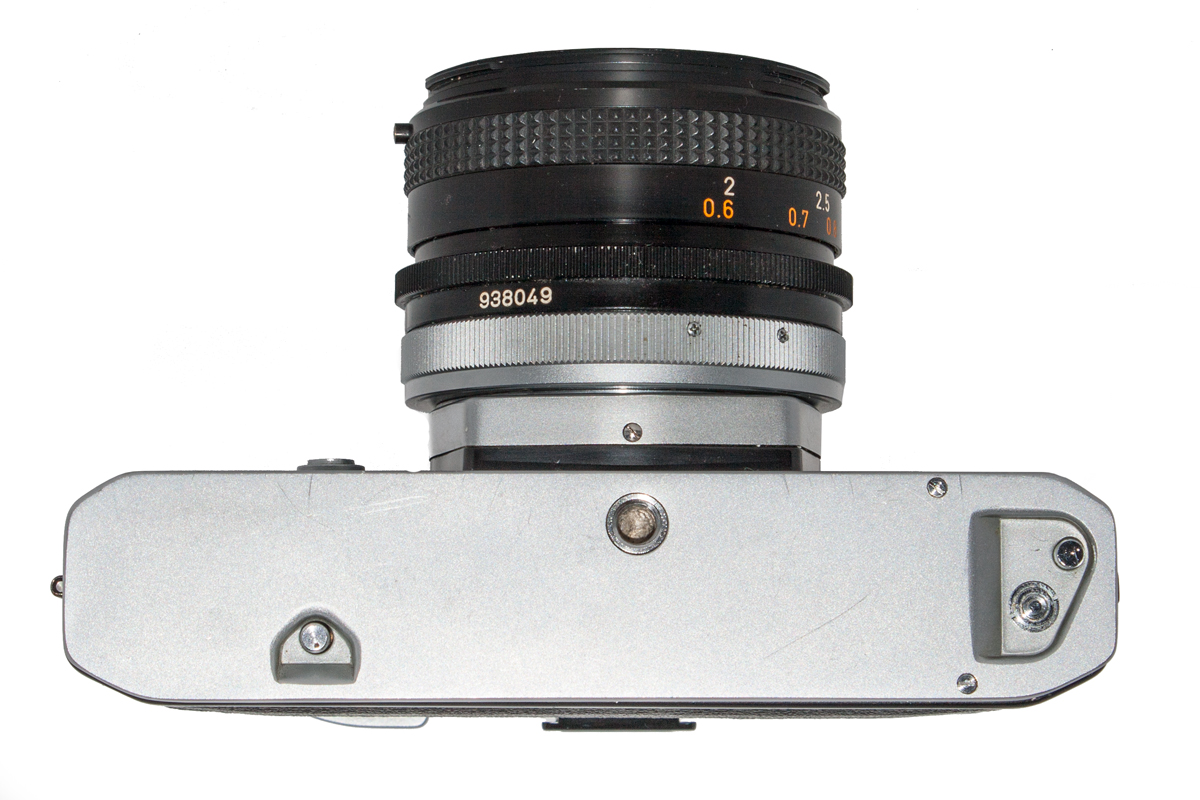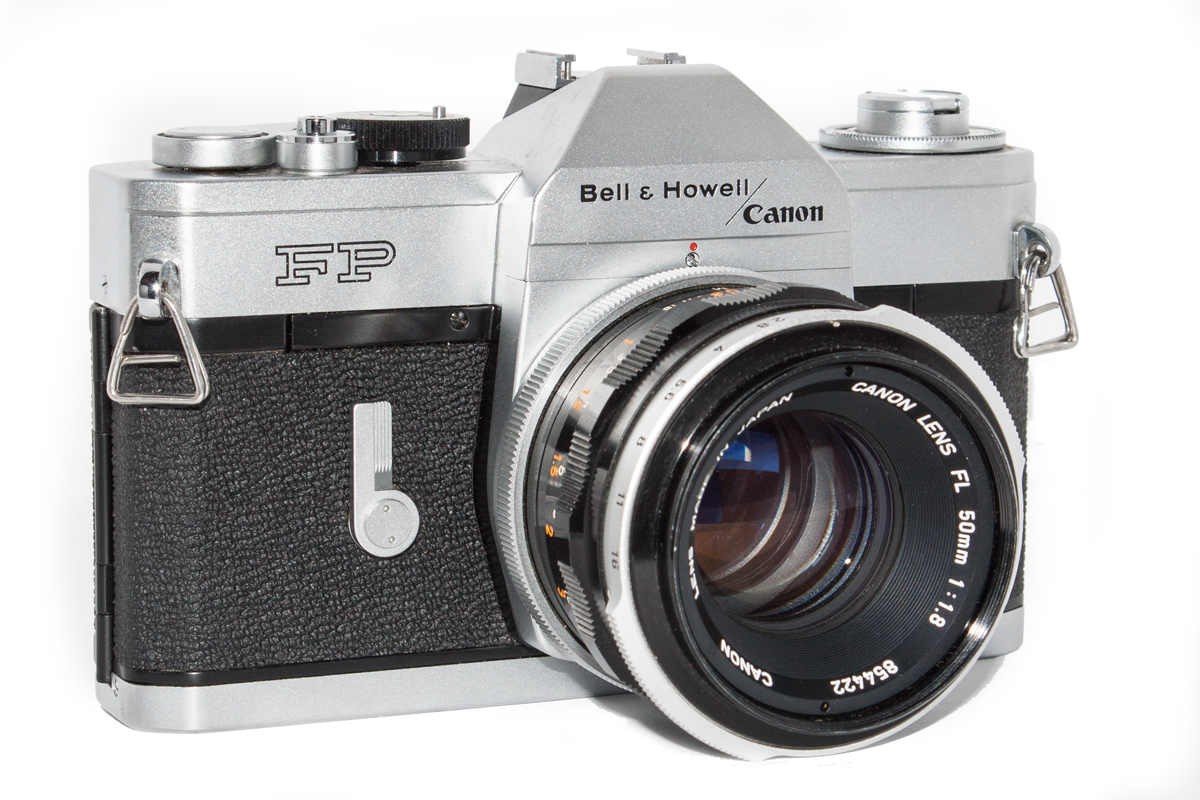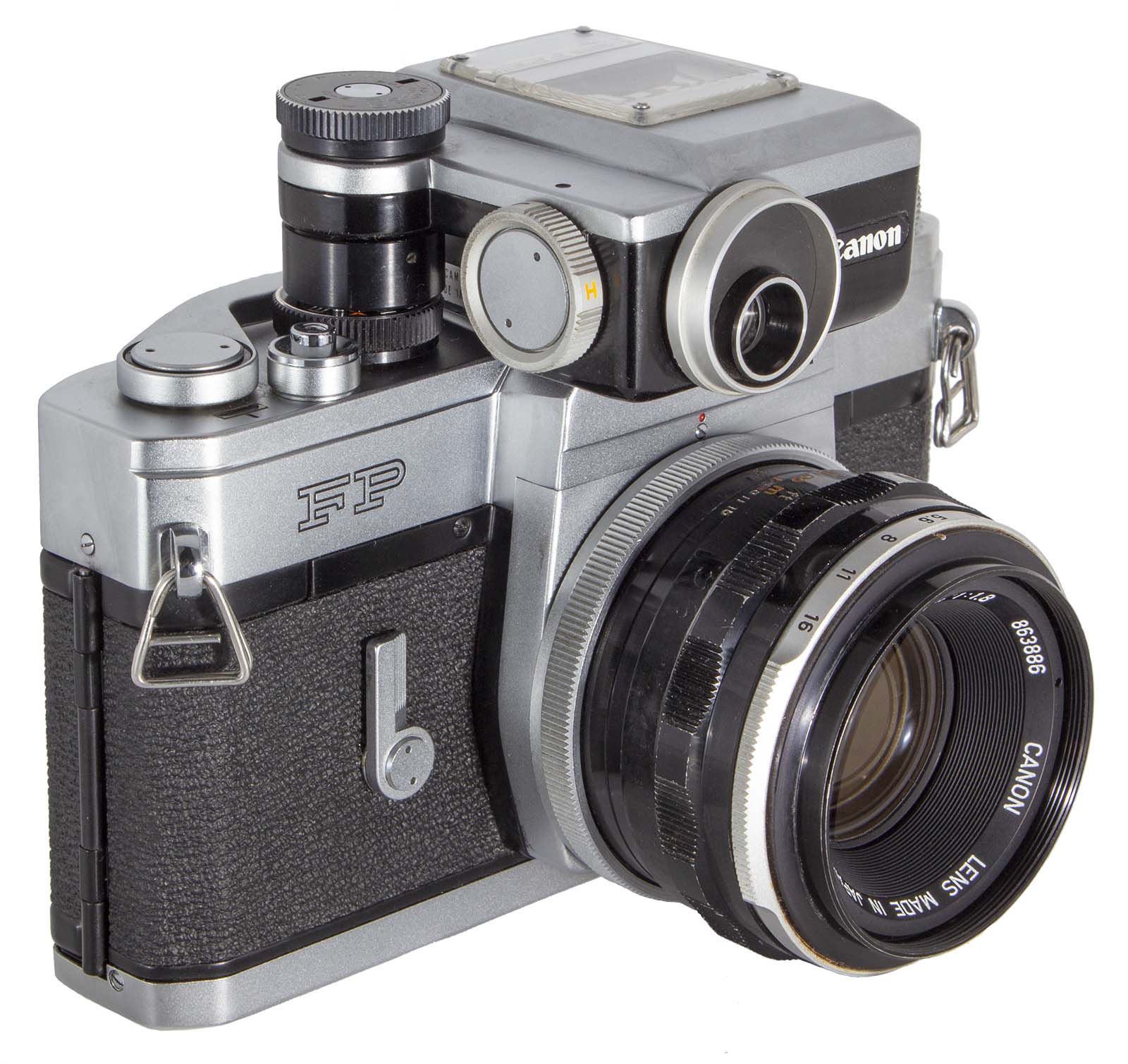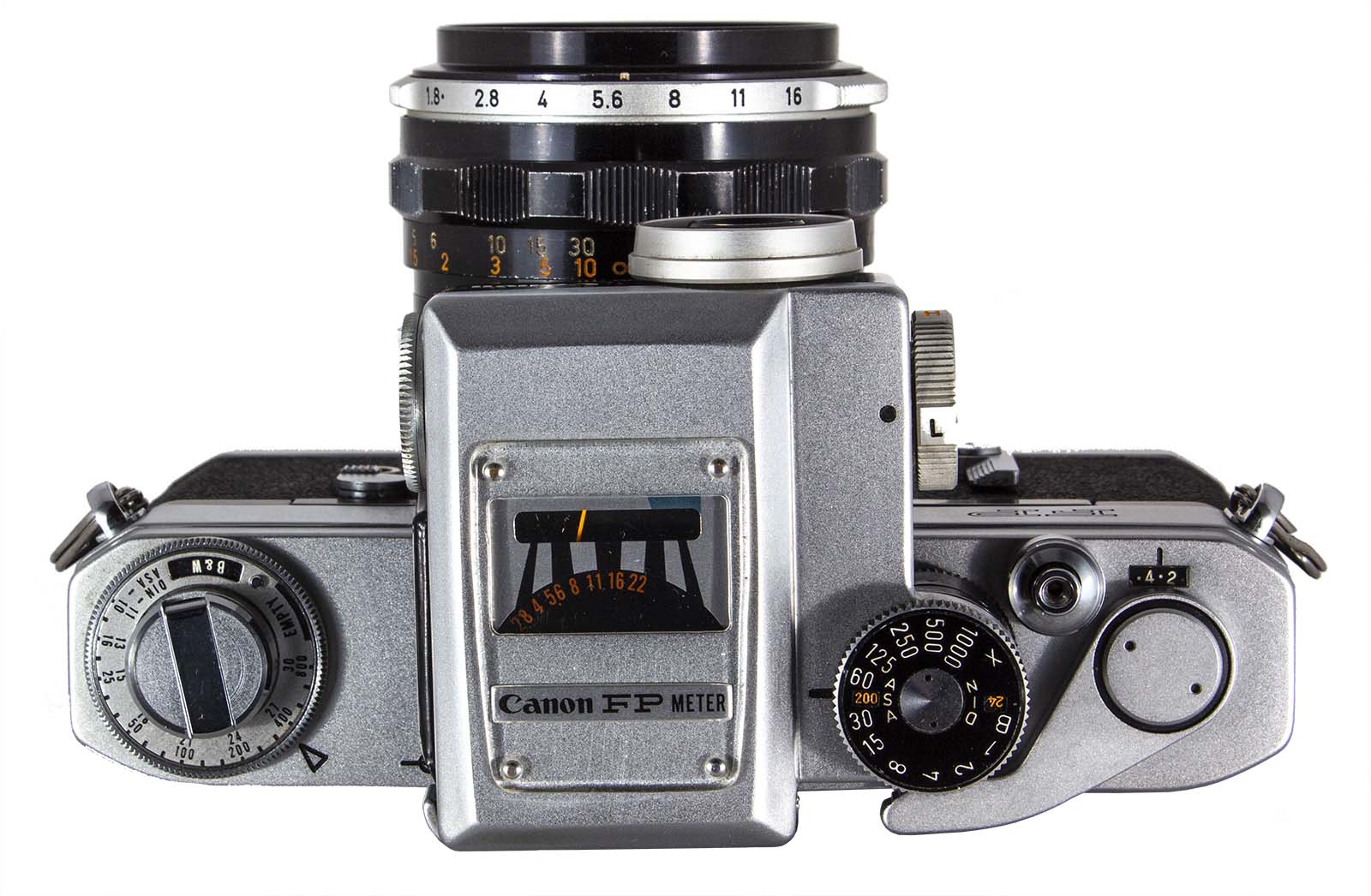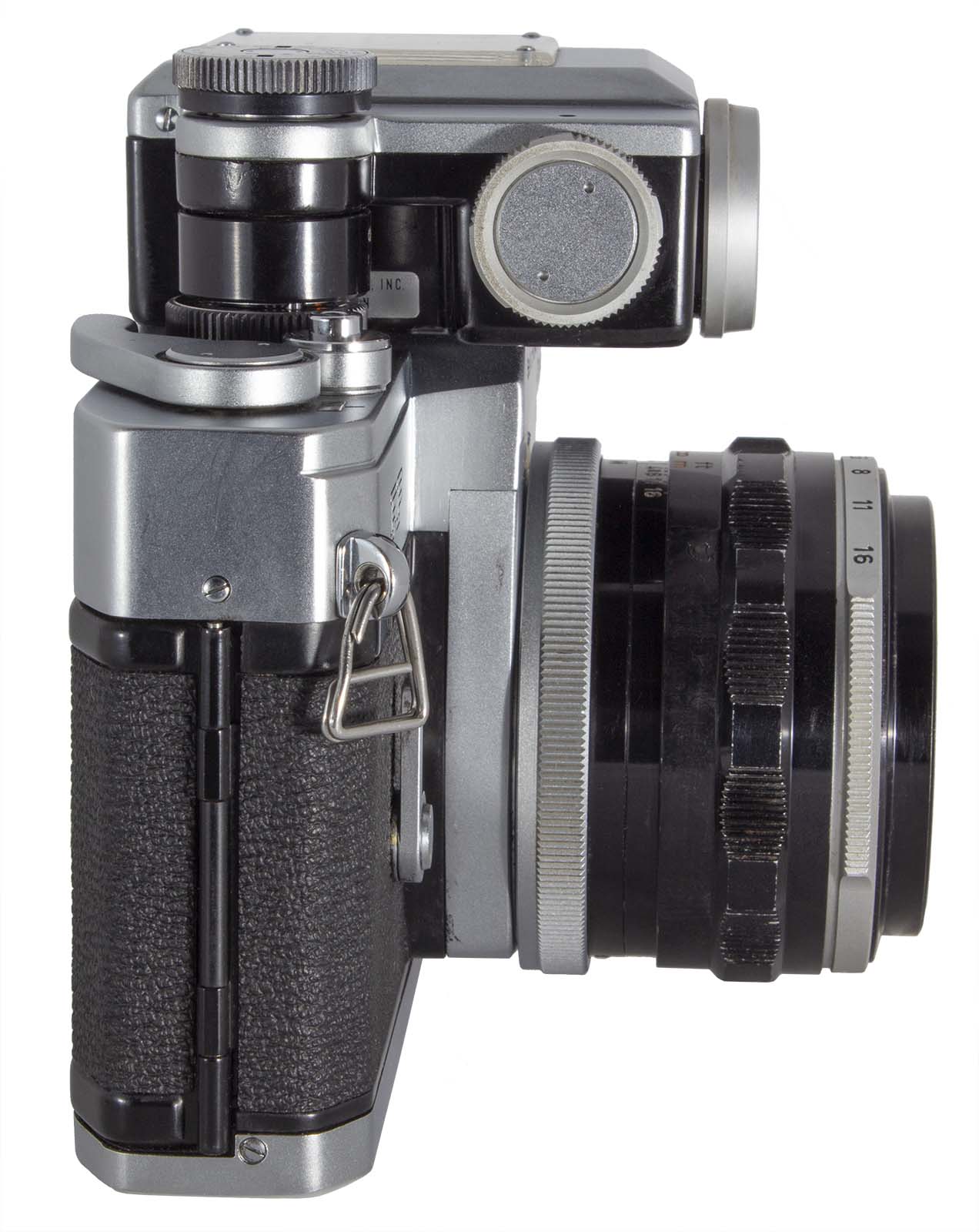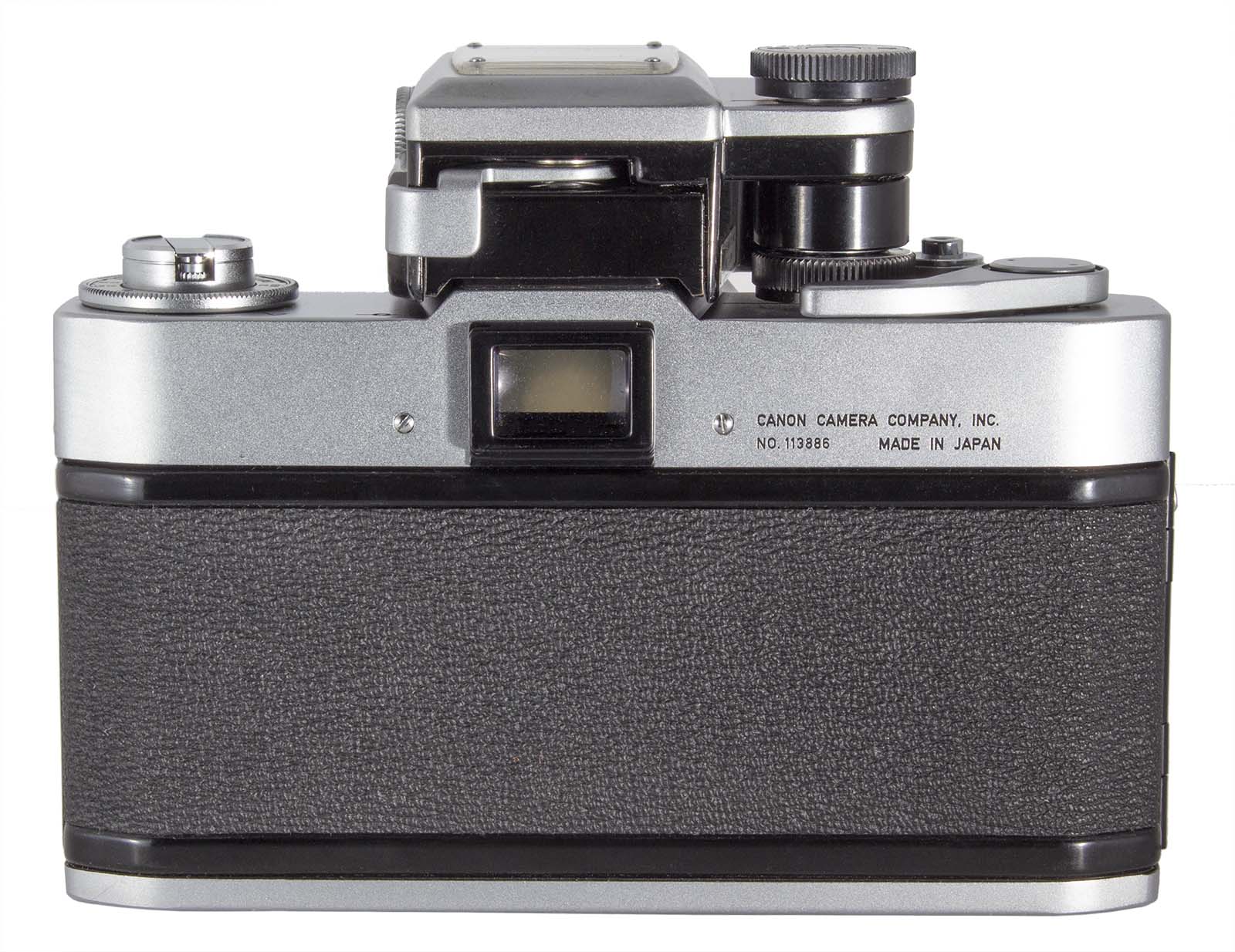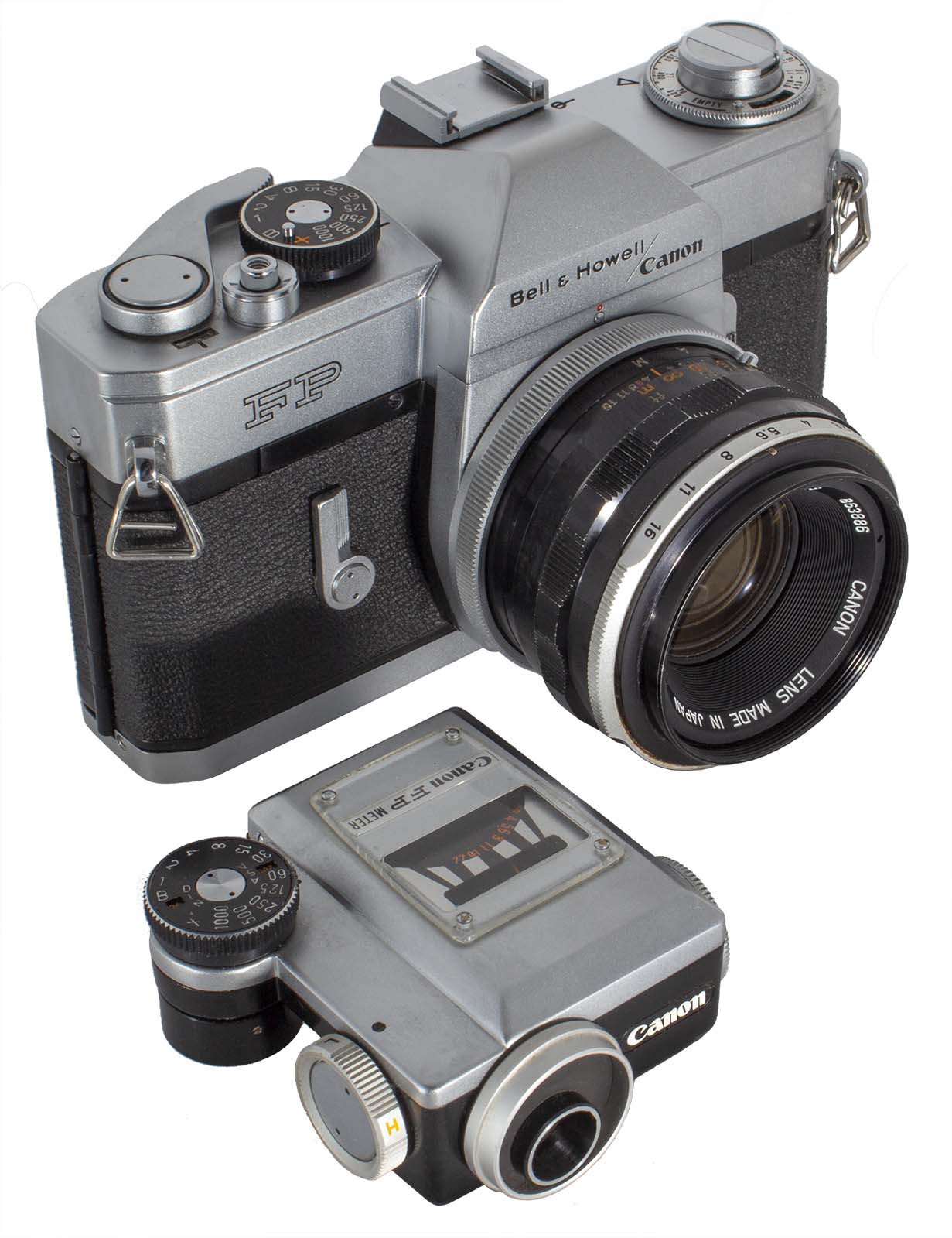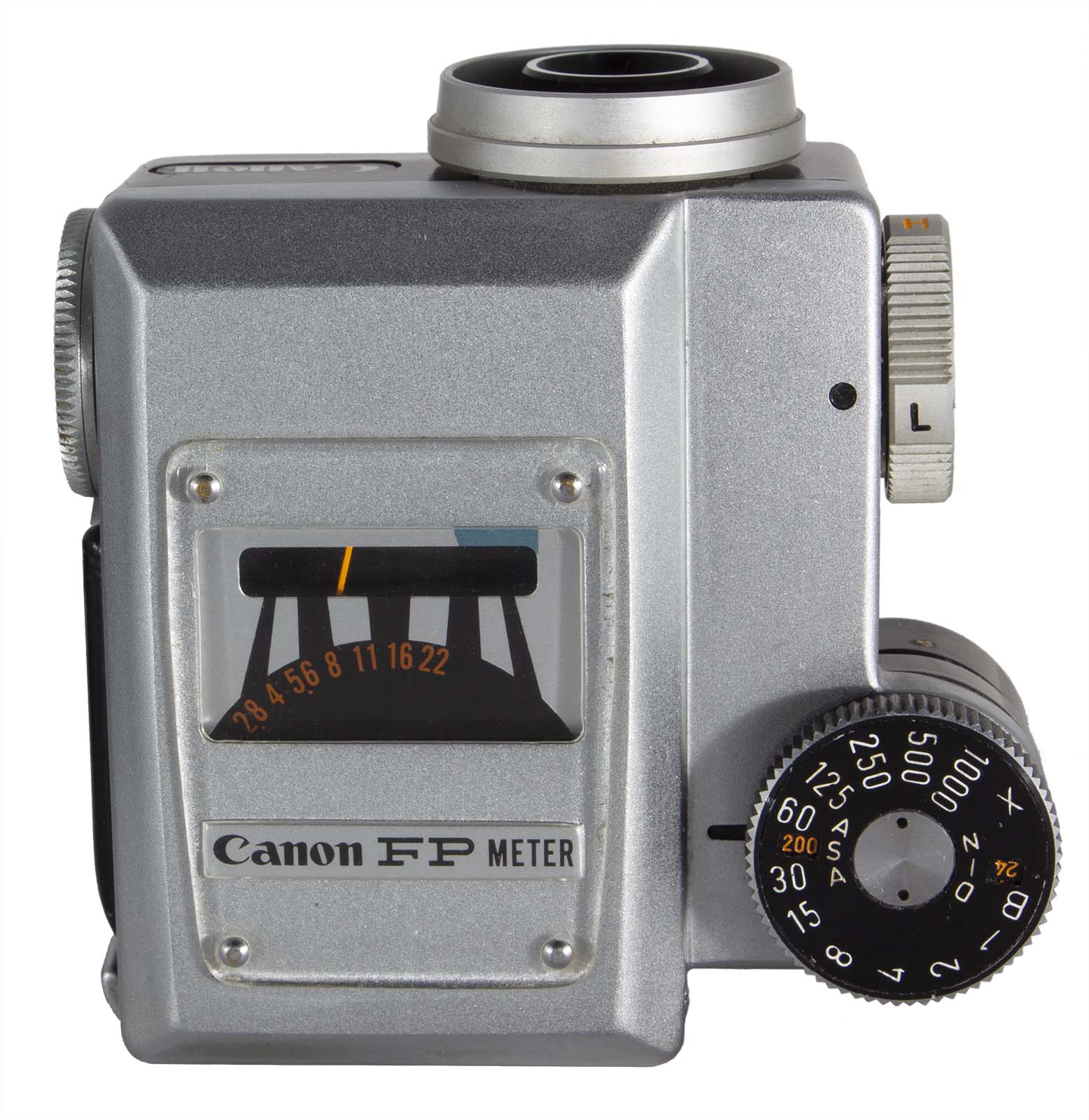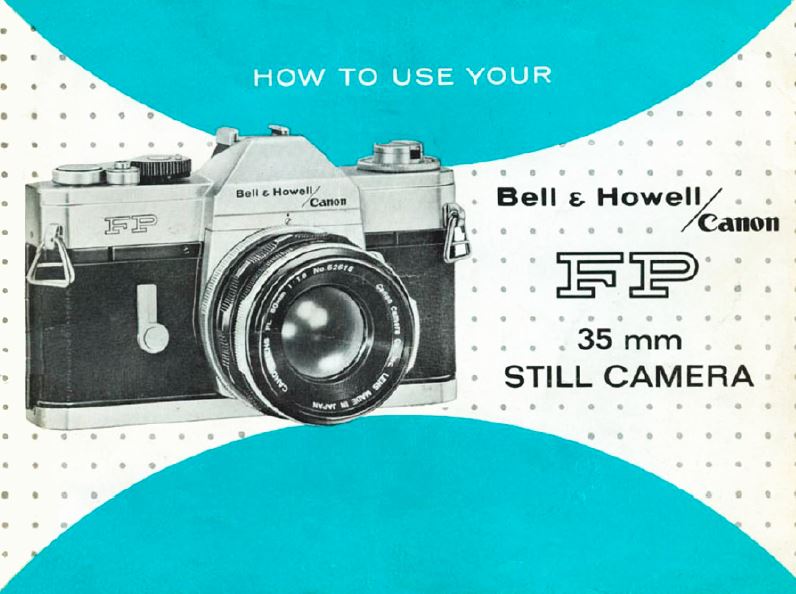This is one of my FP’s (Ser. No.: 113886) with an FD 50mm f/1.8 S.C. lens. The camera has an FL lens mount but is compatible with FD lenses such as this.
The Canon FP
The Economy FX
Canon really began it’s journey to industry dominance with the introduction of the FX camera in April of 1964. This camera set the design outline of Canon cameras for the next two decades. Then in October of 1964 they introduced the model FP which was a simplified FX that sold for considerably less. This was a totally manual camera with no built in light meter or shutter button lock.
Another new feature was the lack of a locking key for the back cover of the
camera. Instead the back opened by pressing a button while sliding a lock. In addition they placed a film reminder dial under the rewind crank. Other than those changes, this was the same camera as the FX. It was apparently available in black but I can find no reference to one on the internet other than the bare reference to some being released.
Note the FP has no window for the CdS Meter Window as on the FX. The lever on the right side of the lens is a mirror lockup lever. On the left of the lens is the self timer lever.
We have a Newsletter
There is a Newsletter for thecanoncollector.com to keep you up to date on what we are posting. Try it!
Without the lens it is easier to see the self timer and mirror lockup levers. Note the PC Socket on the right side for flash sync.
Note the film reminder dial around the rewind crank on the left. The equipment shoe has no flash sync contacts. It is a “Cold” Shoe.
When the FP was released Canon had just entered into a sales agreement with Bell & Howell and the FP was also marketed with their name on it as shown on this camera.
Even though the FP was an economy model it was a very competent camera. Shutter speeds ran from one second to 1/1000 of a second. It had a self timer, PC flash sync socket and a mirror lockup lever. The viewfinder image was bright and had a split image in the center to aid in accurate focus. The split image is a feature much appreciated by old guys like me with less than perfect eyesight.
I like that this camera is manual with no electronics. It is large as SLR’s go and feels heavy to hold and operate. Carrying a hand held light meter is no bother for me. I have done it all my life. And the light meter on the FX is hard to read anyway. My modern digital Sekonic meter is far superior.
But someone at Canon must have thought carrying a meter was a problem. Canon over the years has done things that, with hind sight, look a little strange and one of those things is the FP Meter. Canon made a clip on light meter for the FP effectively turning it into an FX.
This is the FP with the FP Meter installed. If you must mount a light meter this looks like a neat package. The FP Meter is easier to read than the meter on the FX camera.
The FP was a camera without a lightmeter which made it cheaper to produce and so it could be sold at an economy price. If you wanted a lightmeter you bought the FX camera. No problem. Except, the FP had no light meter. Huuuu …. OK. But someone at Canon decided this was a problem and so Canon created a clip on CdS light meter for the FP.
This meter was secured in the cold shoe by moving a lever across the back of the meter and the dial on the meter locked into the shutter speed dial on the camera.
The user set the film speed on the shutter dial on the meter. The shutter speed was then set on the meter, which set the same speed on the camera. Then the user read the f/stop using the meter needle. There were “High” and “Low” settings as well a battery check position on a dial on the side. All very clever, but … was it really neccessary? Why not just buy an FX in the first place?
The FP Meter setting is easier to read than the meter on the FX camera. f/stop on the lens had to be set manually and fully auto shooting was not possible.
The FP Meter is powered by a 1.3 volt mercury battery, the infamous and now illegal, PX625. There are various ways to power the meter now which is discussed here.
Just in passing, note that this meter can be used off the camera as a hand held light meter.
The only instruction book I have for the FP camera is for the Bell & Howel FP and you can read it below. At page 33 you will find the instructions for using the FP Meter.
All things considered, the meter works well and is useful. It is a successful “fix” for people who bought the FP and then decided they wanted an attached light meter.
Using the FP
I like fully manual cameras. It is a bias of mine from long years as a young man shooting with a Minolta SR-1. I loved that camera (I still have it) and the FP reminds me strongly of it.
Like all of the F Series cameras to follow, the FP is heavy to hold and has a feel of quality to it. Controls are simple and easy to master in a few minutes. Shutter speed and f/stop must be set independently of each other.
As I have said before, I don’t do sample images with camera bodies because images are a function of the lens. The camera has an FL lens mount which allows the use of all FD and FDn lenses. Of course the “A” setting on these lenses does not function.
This is a great camera if you are looking for an inexpensive manual shooter or you simply want to own a classic SLR from the 1960’s.
This website is the work of R. Flynn Marr who is solely responsible for its contents which are subject to his claim of copyright. User Manuals, Brochures and Advertising Materials of Canon and other manufacturers available on this site are subject to the copyright claims and are the property of Canon and other manufacturers and they are offered here for personal use only.


